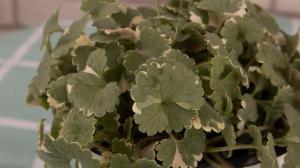Introduction
The slender American holly (Ilex opaca) is a beautiful evergreen tree that is native to the eastern United States. This tree is known for its distinctive spiny leaves and bright red berries, making it a popular choice for gardens and landscaping. However, it is important to properly plant and care for slender American holly trees to ensure their health and continued beauty.
Planting Location
When selecting a location to plant a slender American holly tree, it is important to choose a spot with well-draining soil that receives full to partial sunlight. Avoid planting in areas that are prone to flooding or are shaded by other trees or structures. Once you have chosen a suitable location, dig a hole that is two to three times wider than the root ball of the tree and place the tree in the hole, making sure that the top of the root ball is level with the surrounding soil.
Watering
Slender American holly trees require regular watering, particularly during the first few years after planting. It is important to keep the soil moist but not overly saturated, as this can cause root rot. Water deeply once or twice a week rather than frequent shallow watering. During periods of drought, increase watering frequency to prevent the tree from becoming stressed.
Fertilizing
To promote healthy growth, apply a slow-release fertilizer to the base of the tree in early spring. Be sure to follow the instructions on the fertilizer package, as over-fertilizing can harm the tree. Avoid fertilizing in late summer or fall, as this can interfere with the tree's ability to harden off for winter.
Pruning
Regular pruning can help maintain the shape and size of slender American holly trees. Prune in late winter or early spring before new growth appears. Remove any dead, diseased, or damaged branches, as well as any crossing branches that rub against each other. Avoid pruning too much from the top of the tree, as this can lead to an unbalanced shape.
Pest and Disease Control
Slender American holly trees are generally resistant to pests and diseases, but can be susceptible to leaf spot, powdery mildew, and scale insects. To prevent these issues, avoid overhead watering and ensure that the tree has good air circulation. If pest or disease problems occur, treat promptly using an appropriate insecticide or fungicide.
Conclusion
By following the proper planting and care guidelines, slender American holly trees can thrive in gardens and landscapes for many years to come. With their spiny leaves and bright red berries, these trees add an attractive element to any outdoor space. Whether you are planting one or several, take the time to care for your slender American holly trees and enjoy their beauty for generations.

 how many times do yo...
how many times do yo... how many planted tre...
how many planted tre... how many pine trees ...
how many pine trees ... how many pecan trees...
how many pecan trees... how many plants comp...
how many plants comp... how many plants can ...
how many plants can ... how many plants and ...
how many plants and ... how many pepper plan...
how many pepper plan...































